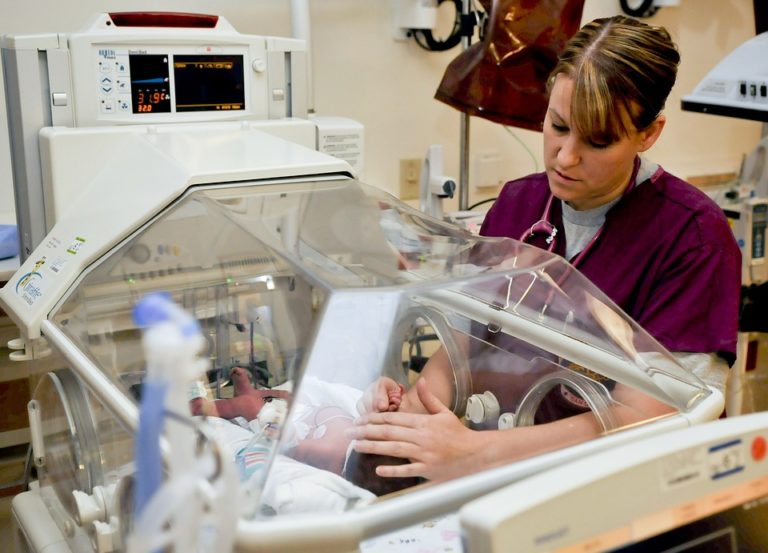Book Appointment Now

Addressing Health Disparities in Maternal Mortality
Addressing health disparities in maternal mortality is critical to ensuring equitable healthcare for all women, regardless of socioeconomic status, race, or geographic location. Maternal mortality—defined as the death of a woman due to pregnancy-related complications during pregnancy, childbirth, or postpartum—is one of the most significant indicators of a healthcare system’s effectiveness. Despite medical advancements, disparities in maternal health outcomes remain persistent, disproportionately affecting marginalized populations. The underlying causes of these disparities range from systemic inequalities and implicit biases in healthcare to inadequate maternal health infrastructure and limited access to essential medical services. This essay delves into the root causes of maternal mortality disparities, their impact on affected populations, and the strategies necessary to bridge these gaps and improve maternal health outcomes worldwide.
Our nursing experts can deliver 100% custom paper on maternal mortality disparities causes and interventions according to your order instructions.
Write my nursing essay
Understanding Health Disparities in Maternal Mortality
Global and Regional Trends in Maternal Mortality
Globally, maternal mortality remains a major public health challenge. According to the World Health Organization (WHO), approximately 287,000 women died in 2020 due to pregnancy-related complications, with a significant majority occurring in low- and middle-income countries (LMICs). Sub-Saharan Africa accounts for nearly 70% of maternal deaths, while South Asia follows as the second most affected region. However, disparities exist even within high-income countries like the United States, where Black and Indigenous women experience three to four times higher maternal mortality rates than White women.
Despite global commitments to reducing maternal mortality, progress has been uneven. While some countries have made strides in improving maternal health services, others have witnessed stagnation or regression due to factors such as political instability, healthcare system weaknesses, and economic constraints.
Causes of Maternal Mortality
Maternal deaths are primarily caused by preventable medical complications that arise before, during, and after childbirth. The leading cause is severe hemorrhage, particularly postpartum hemorrhage, which often results from poor management of obstetric emergencies, delayed access to blood transfusions, and a lack of trained healthcare personnel. Hypertensive disorders such as preeclampsia and eclampsia also pose significant risks, as they can lead to organ failure, stroke, or seizures if not promptly diagnosed and treated. Another major contributor to maternal mortality is infection, including postpartum sepsis, which is often linked to poor hygiene during delivery and limited access to antibiotics. Unsafe abortions, particularly in regions where reproductive healthcare services are restricted, continue to claim thousands of lives each year due to complications such as sepsis and hemorrhage. Furthermore, obstructed labor and uterine rupture remain critical issues in areas where skilled birth attendants and emergency obstetric services are scarce, leading to prolonged labor and, in severe cases, maternal death.
Root Causes of Health Disparities in Maternal Mortality
Socioeconomic Inequalities and Financial Barriers
Women from low-income backgrounds face significant barriers to maternal healthcare. In many LMICs, antenatal care remains inaccessible or unaffordable for a large percentage of pregnant women. Limited financial resources prevent many from attending routine check-ups, increasing the risk of undiagnosed pregnancy complications. In countries without universal healthcare, high out-of-pocket costs associated with hospital fees, medications, and transport further discourage women from seeking medical attention. Economic instability, particularly in informal labor sectors, also affects access to maternal healthcare, as many women lack job security, paid maternity leave, or workplace protections. Without financial support, they may delay or forgo essential maternal care, heightening the risks associated with childbirth.
Racial and Ethnic Disparities in Maternal Health
In countries such as the United States, the United Kingdom, and Brazil, racial and ethnic minorities experience disproportionately high maternal mortality rates due to systemic inequities in healthcare. Implicit bias among healthcare providers often results in Black and Indigenous women having their symptoms dismissed, leading to delays in diagnosis and treatment. Studies have shown that hospitals serving a higher proportion of Black and Hispanic patients tend to have fewer resources, understaffed maternity wards, and lower access to advanced medical interventions. Moreover, historical injustices, including unethical medical experiments and forced sterilization, have created a deep mistrust of healthcare institutions among marginalized communities. This mistrust, in turn, contributes to lower healthcare-seeking behavior, resulting in poorer maternal health outcomes.
Geographic and Infrastructure Challenges
Geographic location significantly influences maternal health outcomes, particularly in rural and remote areas where access to medical services is limited. Many rural communities face severe shortages of skilled birth attendants, with local clinics often relying on untrained personnel who lack the expertise to handle obstetric emergencies. The situation is worsened by poor transportation networks, which force women to travel long distances to reach healthcare facilities. Delays in accessing hospital care are among the primary contributors to maternal mortality in remote regions. Additionally, many healthcare facilities in underserved areas suffer from chronic underfunding, leading to a lack of essential medical supplies such as surgical equipment, oxygen, and blood banks. Without these critical resources, managing pregnancy-related complications becomes exceedingly difficult.
Cultural and Educational Barriers
Cultural norms and societal expectations also play a crucial role in maternal health disparities. In some conservative societies, gender-based restrictions limit women’s ability to seek medical care without the approval of a male family member, delaying access to essential maternity services. Additionally, limited reproductive health education contributes to high rates of unplanned pregnancies and maternal complications. Many young women lack knowledge about pregnancy risks, prenatal care, and family planning, increasing their vulnerability to adverse outcomes. In several rural communities, traditional birth attendants remain the primary caregivers for pregnant women. While they play a valuable role in maternal care, they often lack the medical training necessary to handle complications, leading to preventable maternal deaths.
Strategies for Addressing Health Disparities in Maternal Mortality
Expanding Universal Maternal Healthcare Access
One of the most effective ways to reduce maternal mortality disparities is by ensuring universal access to quality maternal healthcare services. Strengthening primary healthcare systems is essential in making maternal services available at the community level. Governments must implement financial protection programs, such as subsidized maternal care, to reduce the economic burden on low-income families. Expanding midwifery services, particularly in rural areas, can also help ensure that skilled birth attendants are available for every delivery. Investing in healthcare infrastructure and increasing the number of well-equipped maternity wards will further contribute to improved maternal health outcomes.
Tackling Racial and Ethnic Inequalities in Healthcare
To reduce racial disparities in maternal health, healthcare providers must undergo training to recognize and eliminate implicit biases in patient care. Implementing standardized treatment protocols can ensure that all women receive equitable maternal care, regardless of race or socioeconomic background. Moreover, community-based healthcare programs led by individuals from marginalized populations can help rebuild trust in medical institutions and encourage more women to seek maternal health services. By addressing the historical and systemic injustices that have contributed to racial disparities, healthcare systems can work toward providing safer and more inclusive maternity care.
Improving Emergency Obstetric and Postpartum Care
Many maternal deaths occur due to a lack of emergency obstetric and postpartum care. Hospitals and clinics must be equipped with essential supplies, including blood banks, emergency C-section capabilities, and antibiotics for sepsis management. Strengthening referral systems is also crucial to ensuring that women experiencing complications can quickly access specialized care. Additionally, postpartum care programs should be expanded to monitor women beyond childbirth, as many maternal deaths occur in the weeks following delivery. Comprehensive postnatal follow-ups can help detect and treat conditions such as postpartum hemorrhage, infections, and hypertensive disorders before they become fatal.
Strengthening Education and Advocacy
Empowering women with maternal health knowledge can significantly reduce mortality risks. Incorporating reproductive health education into school curriculums will ensure that young women understand pregnancy risks and safe motherhood practices. Public awareness campaigns through mass media and community engagement can promote early prenatal care, safe delivery practices, and postpartum health monitoring. Additionally, engaging male partners and community leaders in maternal health advocacy will help create a supportive environment where women are encouraged to seek timely medical care.
Addressing health disparities in maternal mortality requires a multi-faceted approach that tackles financial barriers, systemic racism, healthcare infrastructure weaknesses, and educational gaps. By expanding access to quality maternal care, eliminating biases in medical treatment, and strengthening health education, global maternal mortality rates can be significantly reduced. Governments, healthcare providers, and community organizations must collaborate to create equitable maternal health systems that ensure no woman dies from preventable pregnancy-related complications.







